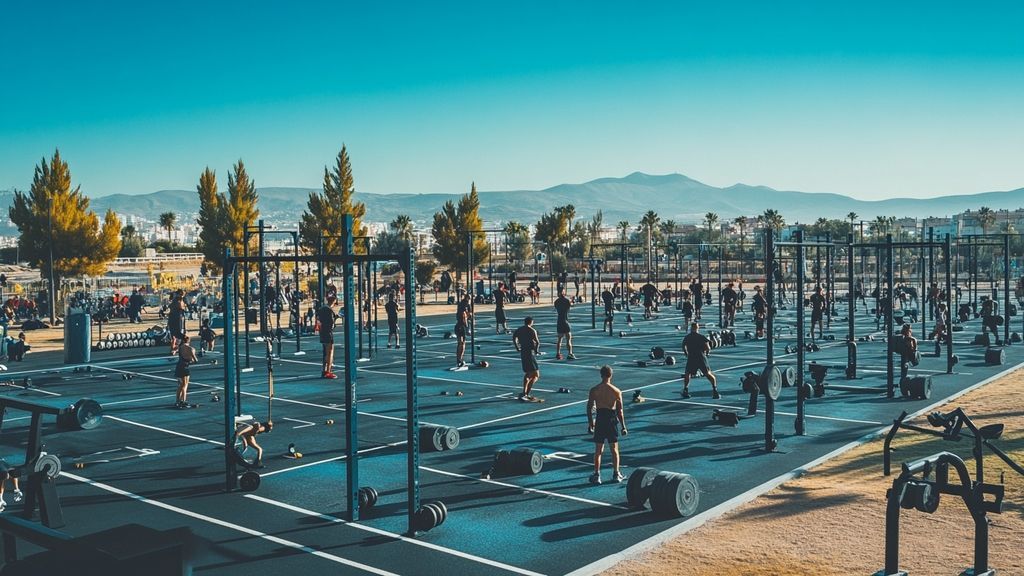Deciding between CrossFit and weightlifting can be daunting for beginners. Both training styles offer unique benefits, but they also come with their own sets of challenges. Understanding your goals, preferences, and fitness level is essential when choosing between these two popular forms of strength training. CrossFit is known for its high-intensity, functional approach while weightlifting focuses more on targeted muscle growth and strength. In this guide, we’ll explore various aspects of both training methods to help you make an informed decision.
Understanding the Basics of CrossFit and Weightlifting
To fully appreciate the differences between CrossFit and weightlifting, it’s crucial to first understand each training method’s basics. CrossFit combines elements of various fitness disciplines, including powerlifting, Olympic weightlifting, gymnastics, and metabolic conditioning. This creates an intense training environment that typically emphasizes speed, strength, and agility. On the other hand, weightlifting is centered around lifting heavy weights using specific movements focused on muscle groups. Let’s break it down further.
The Philosophies Behind Each Training Style
The training philosophy behind each method profoundly influences your workout experience. CrossFit’s philosophy is all about constant variation, aiming to enhance fitness across different domains. This is tailored for those who enjoy challenging their bodies in various ways and don’t mind a competitive atmosphere. Conversely, traditional weightlifting adopts a more methodical approach. Each session focuses on specific muscle groups, allowing for an understanding of your progress through gradual increases in weight and complexity of exercises.
Workout Structures: How They Differ

Understanding the different workout structures can help you determine which training style might be more beneficial for you. CrossFit workouts, often referred to as WOD (Workout of the Day), are typically short, intense, and designed to target multiple muscle groups. This means you’ll often engage in high-intensity interval training (HIIT) sessions that require a combination of strength and endurance.
CrossFit WODs: Short and Intense
CrossFit workouts are generally under 30 minutes but packed with intensity. They include exercises such as kettlebell swings, box jumps, and multiple forms of lifts. The aim is to complete a set number of reps or rounds as quickly as possible. This structure not only builds strength but also enhances your cardiovascular capacity and overall agility. This training style is perfect for individuals who thrive on high-energy workouts.
Weightlifting Sessions: Focused and Measured
In contrast, weightlifting sessions typically last much longer—between 60 to 90 minutes—focusing on controlled movements and setup for lifting heavier weights. With exercises like bench press, deadlifts, and squats, the weightlifter often targets specific muscle groups, using principles such as progressive overload to ensure substantial strength gains over time. For those who prefer a structured, goal-oriented workout, this method might be the best fit.
Exercise Selection: Which Is Better for You?
Another essential aspect to consider is exercise selection in both workout methodologies. CrossFit embraces a diverse range of exercises that often integrate Olympic lifts, cardio movements, and bodyweight exercises like pull-ups and burpees. This variety ensures that workouts remain challenging and dynamic, catering to various fitness levels and interests.
CrossFit: Variety and Functional Movements
In CrossFit, the emphasis is on functional movements that translate into everyday activities. Exercises are designed to work several muscle groups at once, like cleans, snatches, and more complex gymnastic movements—often requiring a higher level of coordination and balance. This diversity not only keeps the workouts interesting but ensures well-rounded fitness improvements.
Weightlifting: Focused Muscle Growth
Weightlifting, in comparison, typically revolves around compound lifts, often complementing them with isolation movements. Bodybuilders may do heavy bench presses followed by lighter lifts targeting specific muscles such as biceps or triceps. Weightlifting routines may not provide the same variety in movements, but they offer higher adaptability for those with specific strength or aesthetic goals.
The Intensity Factor: CrossFit vs. Weightlifting

Both training styles vary significantly regarding intensity and volume, and these factors can greatly affect your training results. CrossFit is synonymous with high-intensity training that maximizes effort and accelerates performance gains. Conversely, weightlifting emphasizes controlled progression, ensuring proper form and technique before moving to heavier weights.
Intense CrossFit Workouts
The high-intensity nature of CrossFit means you’re consistently working near your limits. Athletes usually perform movements for max reps or at a pace that rapidly increases heart rates. This approach can lead to impressive cardiovascular and endurance gains while also improving muscle tone. However, it might not be suitable for everyone, particularly those just beginning their fitness journeys.
Progressive Weightlifting
Weightlifting, on the other hand, tends to focus on gradual progression. By using methods like rep schemes and sets, lifters are encouraged to push their limits in a more controlled and systematic manner. This type of training is often recommended for beginners, as it naturally reduces the risk of injury and promotes long-term strength development.
Injury Considerations in CrossFit and Weightlifting
Choosing an exercise regimen also requires understanding the injection risk associated with each method. Both CrossFit and weightlifting have their inherent risks, primarily if proper technique is not maintained, especially with heavier loads. However, recent studies have indicated that injury rates in CrossFit can be comparable to traditional weightlifting when both are performed correctly.
Injury Risks in CrossFit
CrossFit can have a higher perceived injury risk due to the workout’s intensity and complexity. This method requires a considerable amount of exercise variations performed at speed, which can lead to fatigue-induced mistakes. Safety measures, like ensuring proper warm-up and cooldown, as well as using competent coaching, are essential to mitigate risks.
Injury Risks in Weightlifting
While weightlifting predominantly follows a controlled structure, it can still lead to injuries—particularly if lifting beyond one’s capacity. Excessive loads combined with improper form also increase the risk. Therefore, emphasizing proper technique and respecting individual limits is crucial for safe training.
Community Aspect: Finding Support in Training

The community aspect of a workout environment can play a significant role in your fitness journey. CrossFit is renowned for its strong community focus, where fellow athletes encourage each other and foster camaraderie during workouts. For many beginners, this aspect can be motivational and help them to stick to their routines.
CrossFit Community
Being part of a CrossFit box (gym) can lead to motivations from fellow participants who push themselves and each other. Group workouts, challenges, and competitions create a friendly yet competitive atmosphere that helps build lasting friendships. This level of support can be incredibly beneficial to beginners just starting their fitness journey.
Traditional Weightlifting Environment
Weightlifting often tends to be more solitary, yet many gyms offer group classes or personal training options providing some community aspect. However, it typically doesn’t foster the same level of interaction and support as a CrossFit setting. For many individuals, the quieter, focused environment suits them, allowing personal introspection while working out.
Final Thoughts on Choosing Between CrossFit and Weightlifting
Deciding whether to start with CrossFit or weightlifting hinges primarily on individual goals and preferences. If you’re seeking a well-rounded fitness routine that covers many aspects of health—such as strength, endurance, and agility—CrossFit may be the appropriate option. Alternatively, if your primary aim is to focus on muscle growth and strength—preferably through a structured approach—weightlifting could be your best bet.
